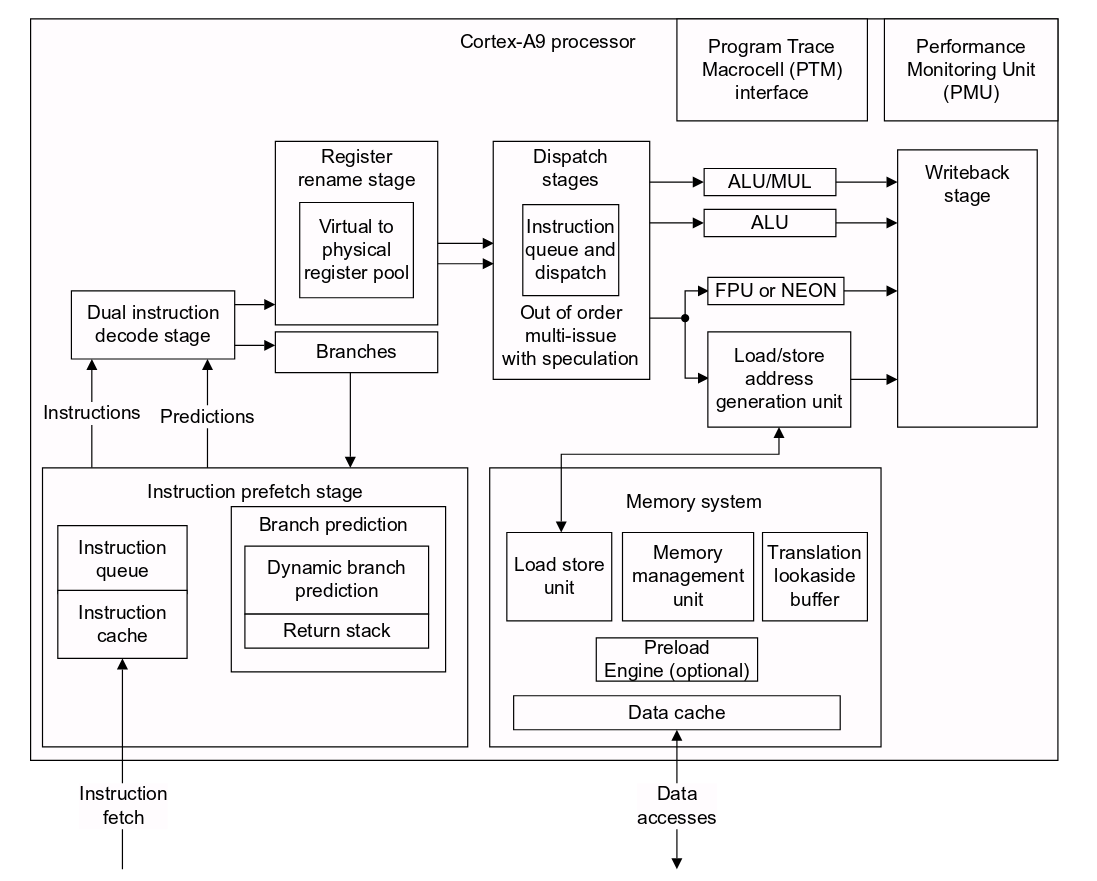At the start of 2018, a set of three serious bugs in CPU hardware were revealed to be affecting the vast majority of processors manufactured since the mid-90s. This week, Ed explained how these bugs work, explaining some advanced features of CPUs along the way.
You can find the original slides for this talk here.
Brief overview of Meltdown & Spectre
Meltdown
-
Exploits side effects of out-of-order execution to read arbitrary kernel memory
-
Affects all modern Intel CPUs in recent years

Spectre
-
Induces victim to speculatively perform operations which leak information
-
Affects many high-performance CPUS, including Intel, AMD and ARM chips in recent years, and others

Modern CPU Architecture
Traditional Computers
-
Next instruction fetched from memory
-
Instruction is decoded and the location any of indirectly referenced memory is interpreted
-
Instruction is executed, and written to wherever is specified
-
Each instruction takes several clock ticks
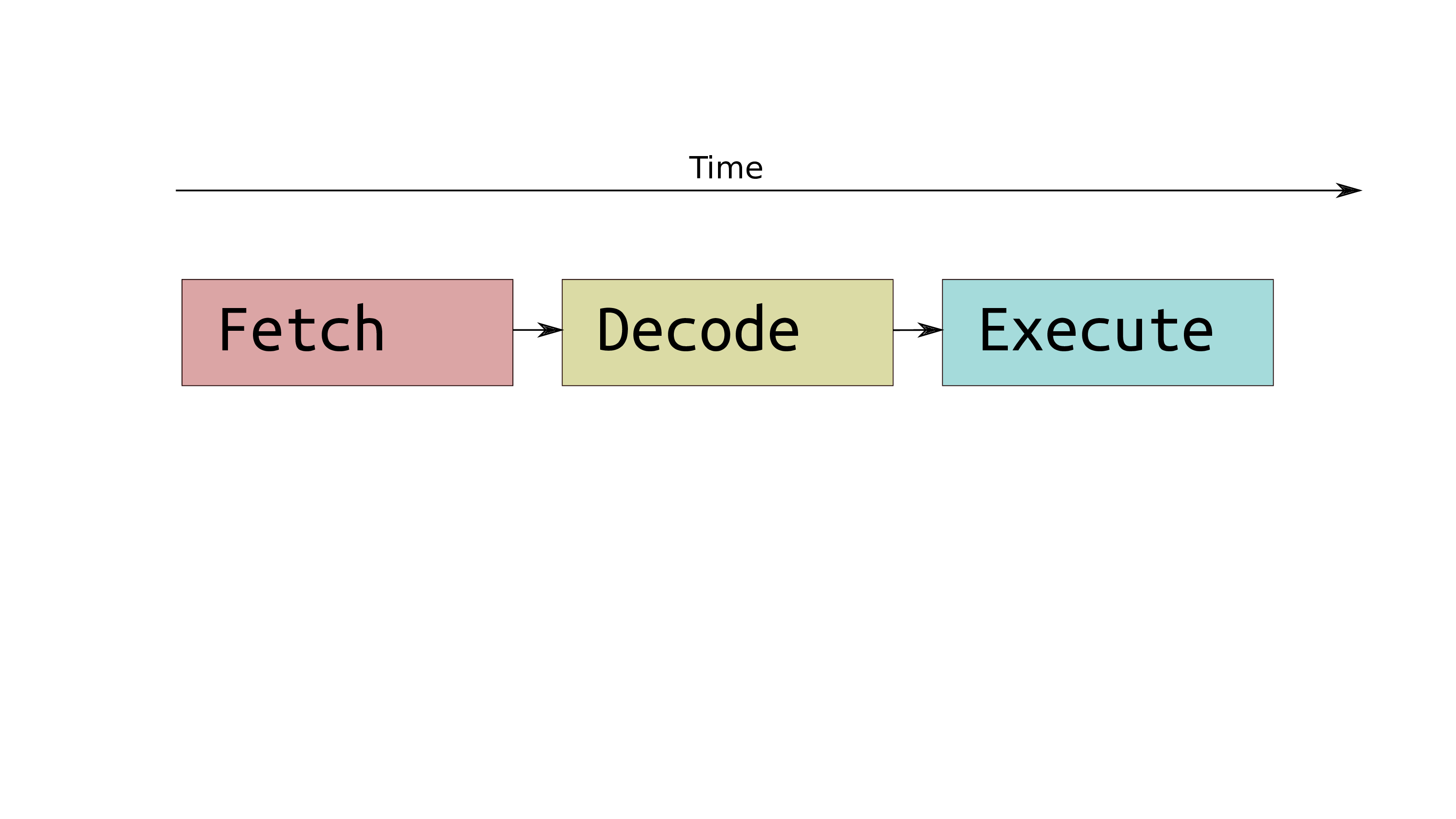
- Instructions take several clock cycles
Memory Hierarchy
-
Modern computers use multiple types of memory
-
Each Various levels present different trade-offs of speed & memory
-
When the CPU needs memory, it will move it into a lower-level cache
-
Example:
| Memory | Size | Latency |
|---|---|---|
| L1 Cache | 64 KB | 4-12 |
| L2 Cache | 256 KB | 26-31 |
| L3 Cache | 4 MB | 43-60 |
| RAM | 8 GB | 100s |
Pipelining
-
F-D-E cycle micro-ops can be done in parallel, each is done by different hardware
-
Breaking the cycle down into more micro-ops allows more instructions to be processed at once
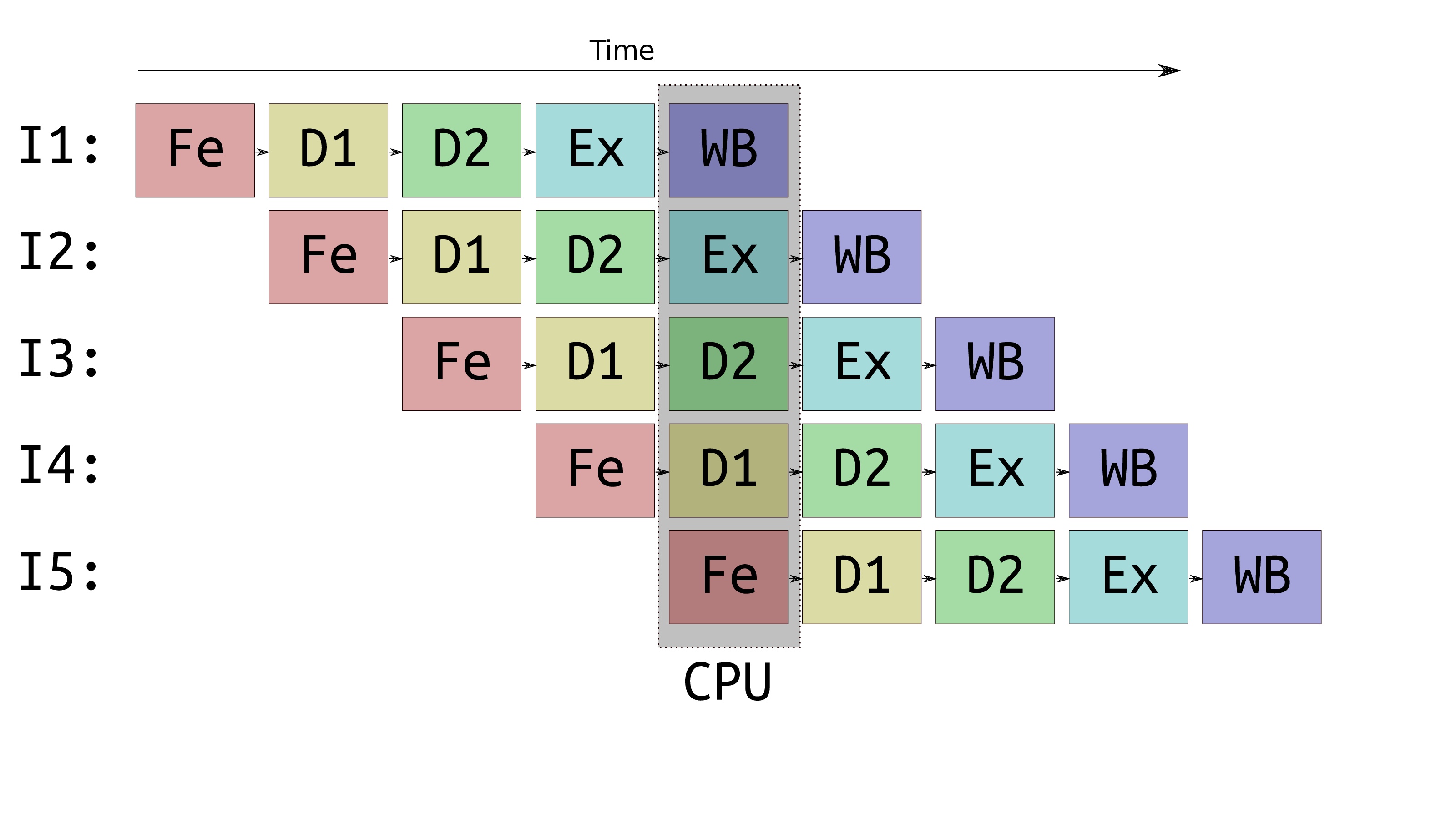
Out-of-order execution
- Modern CPUs allow micro-ops of many operations to be done out of order
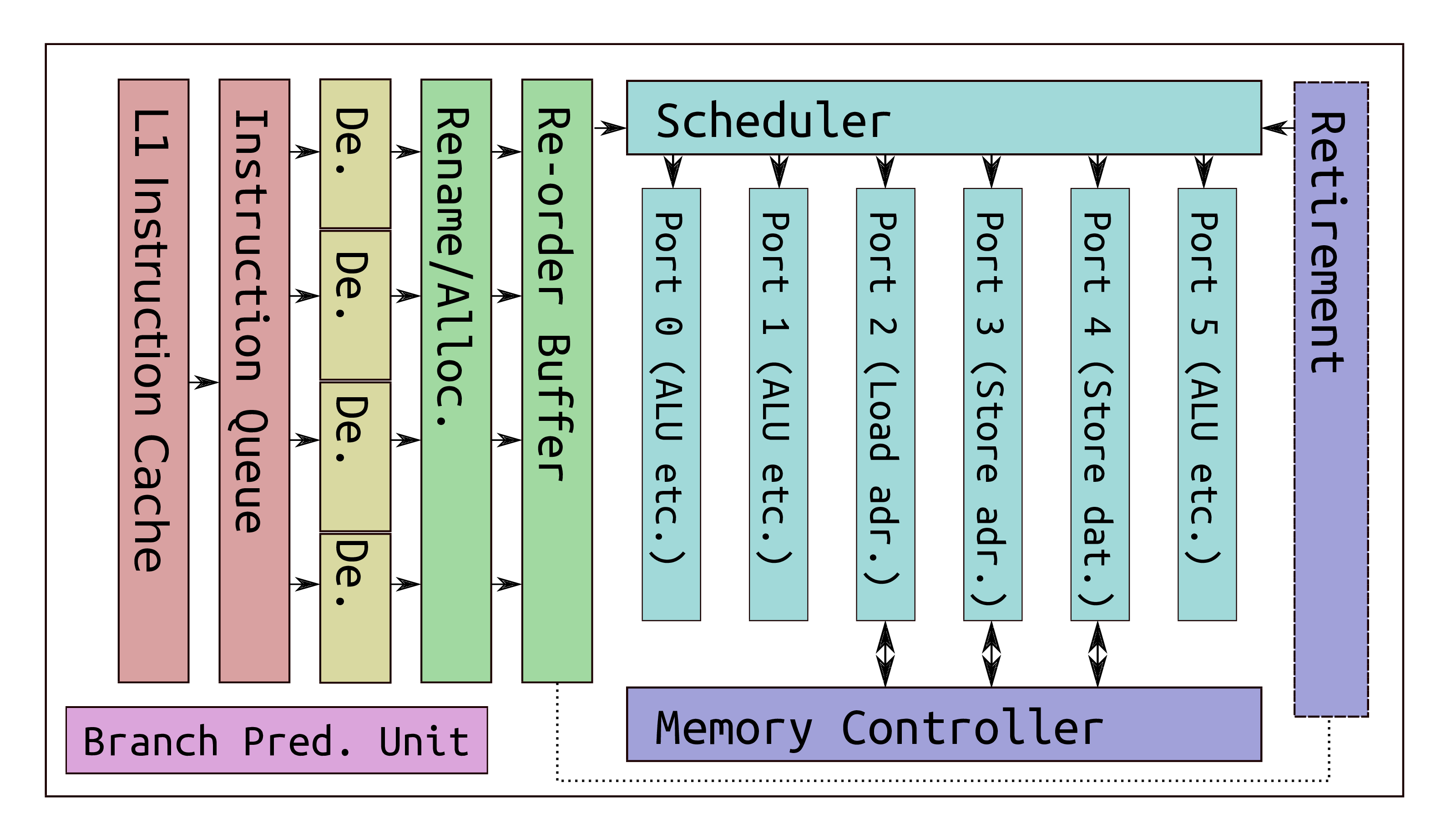
Speculative execution
- Allows commands such as loads & stores to be issued before:
- preceding branches resolve
- preceding operations complete
Branch prediction
- Branches include:
- Conditionals
- Direct calls & jumps
- Indirect calls & jumps
- Returns
- Calculated by the Branch prediction unit (BPU), including:
- Return stack buffer (RSB): A history of recent return addresses
- Branch target buffer (BTB): Recent outcomes from conditionals/calls
Exploiting the architecture
Transient instructions
- Instructions that:
- Are executed out of order
- Leave measurable side effects
-
Occur all the time in normal operation
- Exploitable if their operation depends on a secret channel
Example
...
if (x < 0)
call OutOfBounds();
var = array[x];
...
Transient instructions
- Instructions that:
- Are executed out of order
- Leave measurable side effects
-
Occur all the time in normal operation
- Exploitable if their operation depends on a secret channel
Example compiled
...
cmp rax, 0 ; Compare register rax to 0
jl OutOfBounds ; If rax < 0, jump elsewhere
mov rcx, [rbx + rax] ; Now, move some memory into rcx
...
Side-channel attacks
-
Usually, multiple programs run on the same hardware
-
State of the CPU can be changed by these programs
-
Such changes may be detectable by other programs
Example state changes:
- Branch history
- BTB
- Caches (e.g. Flush+Reload)
Meltdown attack
Overview
- Allows non-privileged users to read privileged memory
3 Steps to Meltdown
-
The content of a restricted memory location is loaded into a register, throwing an exception
-
A transient instruction accesses an uncached memory address based on the contents of that register, fetching it into cache
-
A side-channel attack (e.g. Flush+Reload) used to determine which memory has been moved to cache, revealing the value of the restricted memory
Steps 1 & 2: Transmission of the secret
-
Line 5 attempts to retrieve the secret byte from address
rcxintorl -
CPU checks permission bits of address, and raises an exception
-
While that is happening line 8 speculatively fetches some offset from the probe array, caching it
-
Once line 5 retires, the exception resolves and the CPU registers and pipeline are flushed
1 ; rcx = secret address
2 ; rbx = probe array
3
4 retry:
5 mov a1, byte [rcx]
6 shl rax, 0xc
7 jz retry
8 mov rbx, qword [rbx + rax]
Step 3: Receiving the secret
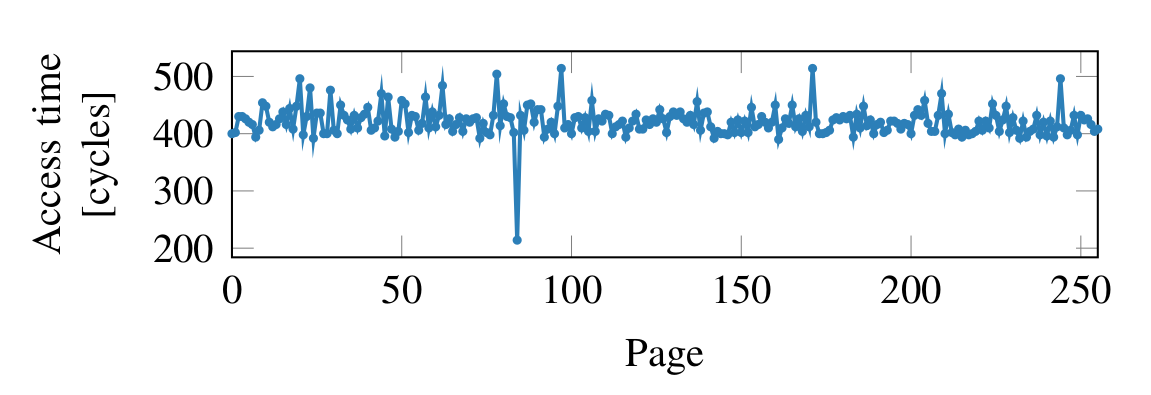
-
Using a Flush+Reload attack, access time to the probe_array can be measured
-
By timing access to each entry in the probe array, the entry corresponding to the value of the secret byte becomes apparent, (in this case it was 84)
But which addresses?
-
User processes don’t know physical addresses, they use a virtualised address space
-
User processes may need to access the kernel, so kernel memory is mapped within this space
-
Since the kernel manages everything, the entire physical memory is mapped within the kernel address space
Address Space Layout Randomization
-
In the past, the address of physical memory was easy to figure out for a given kernel
-
Within the past 15 years, ASLR has been implemented in all main OSs to randomize these addresses
-
Randomization is limited to 40 bits, so on a machine with 8GB of memory, only 128 tests are needed to find the actual physical memory
-
Once found, the attacker can proceed to dump the entire physical memory
Performance
-
Since steps 1 and 2 are much faster than step 3, performance can be improved by only reading 1 bit at a time:
- In this case, only one read of the probe array is needed:
- if it’s cached it’s a 1
- else it’s a 0
- Using this technique, an attacker can read any portion of physical memory at
500KB/s, with an error rate of <0.04%
Meltdown Fixes
-
The fix for meltdown involves remapping the virtual address space every time a program makes a system call to the kernel
-
This means that the kernel memory won’t be in unprivileged processes’ address spaces, but will slow down certain operations
-
This has been patched in all major OSs (“Kernel Page Table Isolation” or KPTI for linux)
-
Make sure your computers are up-to-date to minimize the risks
Spectre attacks
Overview
-
Allows attacker to trick a victim process into revealing secret memory from their address space
-
Involves training the victim code to speculatively execute code it otherwise wouldn’t
-
2 approaches involving : a) Training the outcome of a conditional branch in the victim b) Training the call address of a victim’s call
Exploiting conditional branch misprediction
-
Consider some victim code:
1 if (x < array1_size) 2 y = array2[array1[x] * 256]; -
Calling this code (e.g. through an API) with allowed
xmultiple times trains the CPU to speculatively execute line 2. -
Now, calling with some malicious
x, line 2 can cache memory based on the target value, as previously mentioned -
Selecting appropriate values for
xallows an attacker to read arbitrary memory from the victim’s address space -
For example:
- Accessing secrets from a cryptographic library
- Accessing arbitrary browser data from a sandboxed JS environment
Poisoning indirect branches
-
In some cases, a victim will make a branch call while the attacker has control over some CPU registers
-
E.g. A function making a function call while dealing with externally provided data
-
The attacker can train the BTB to branch to some gadget code instead of the correct destination
-
This way, data from addresses calculated from those registers can be leaked
Spectre fixes
-
Much harder to fix than Meltdown, KPTI and similar fixes won’t work
-
Fixes can include allowing indirect branches to be isolated from speculative execution
-
Likely to be an issue for a while
Many thanks!
Useful Resources
- Google project zero post
- Meltdown paper
- Spectre paper
- Intel x86 optimization manual
- Google post on spectre fix
Appendix
Intel Haswell Microarchitecture
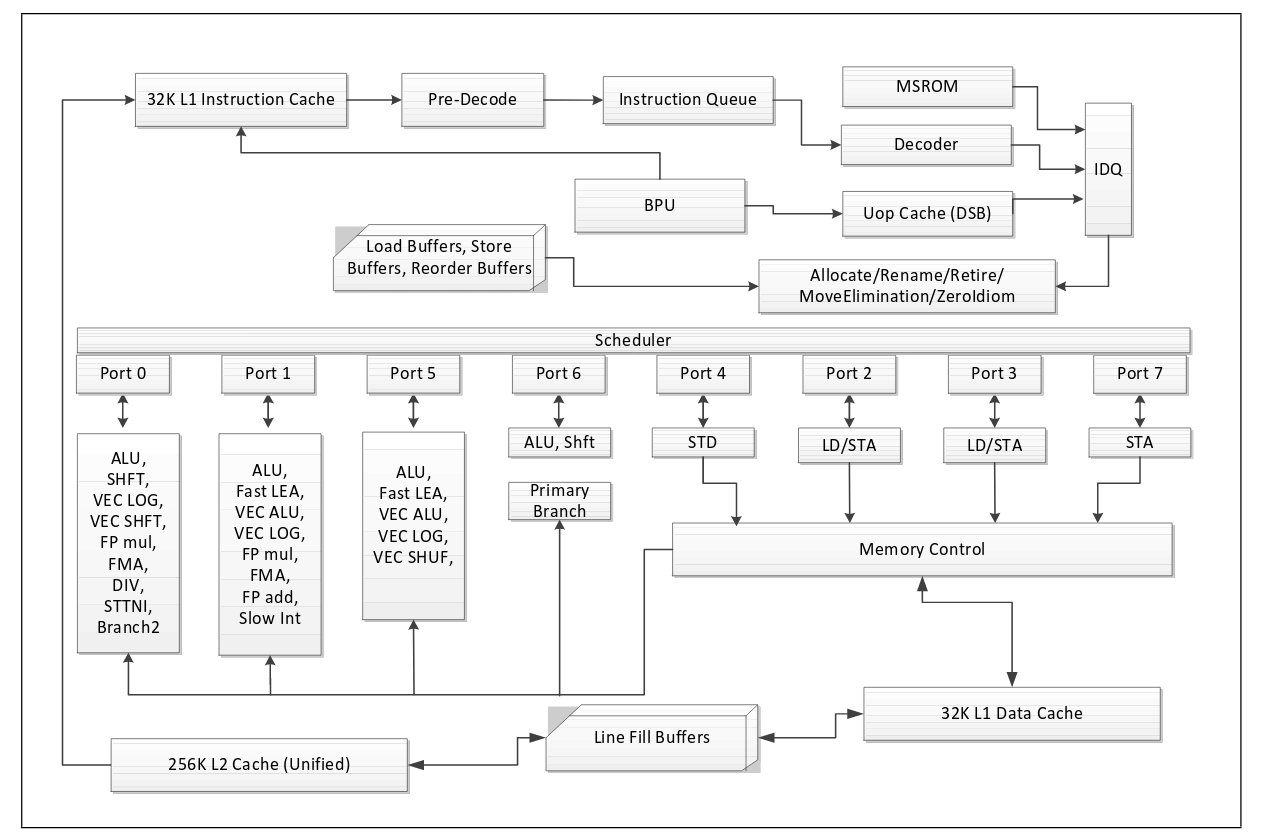
AMD Zen Microarchitecture
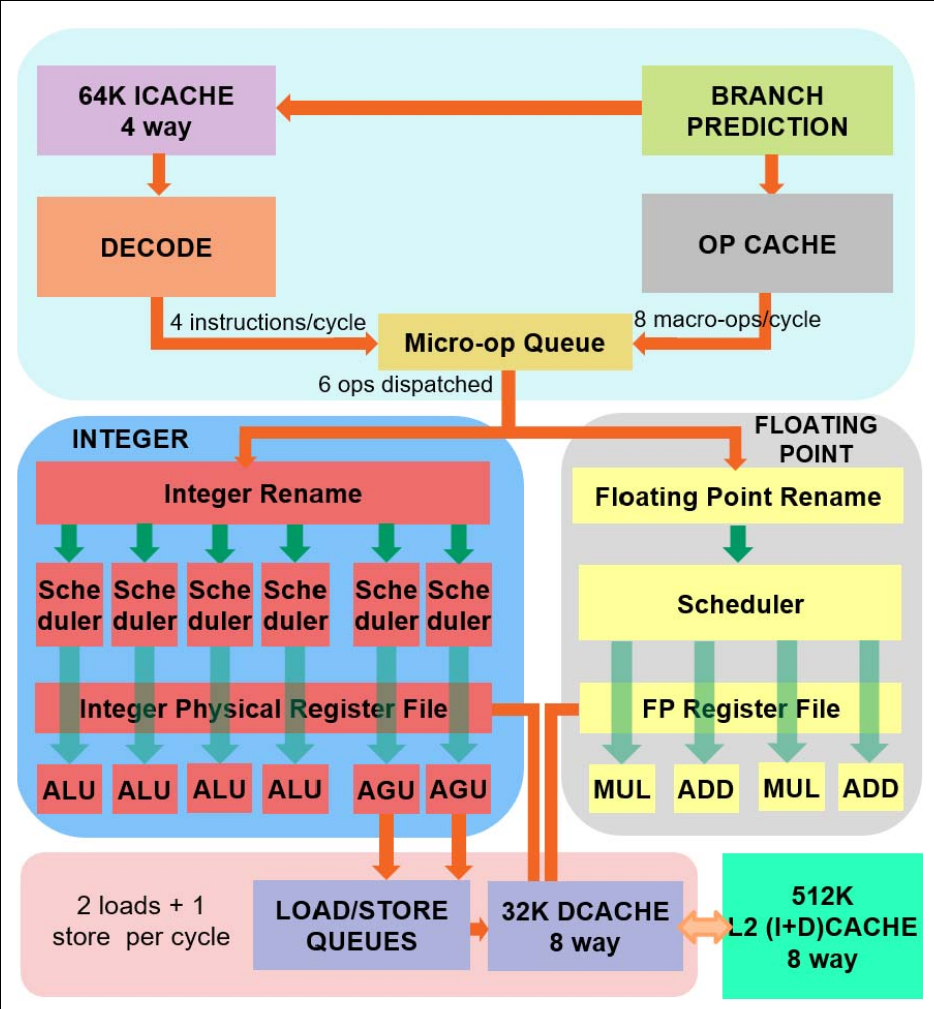
ARM Coretex A9 Microarchitecture
